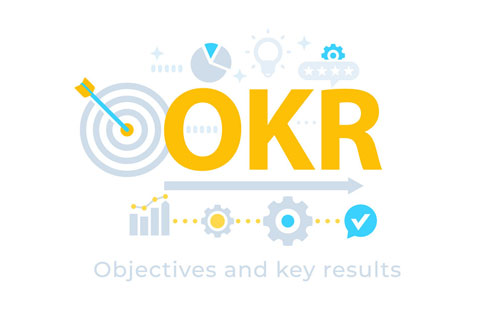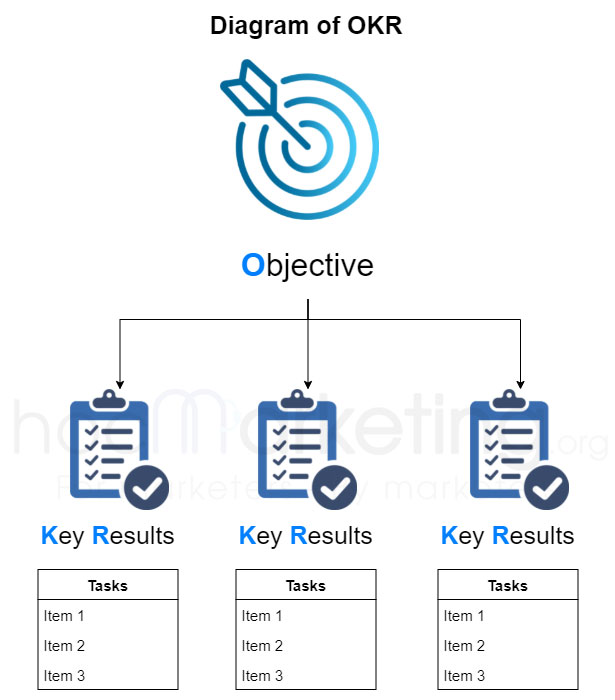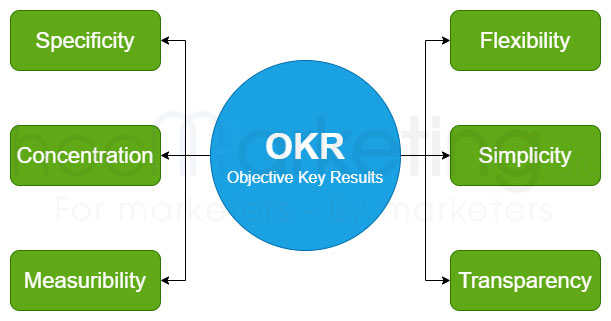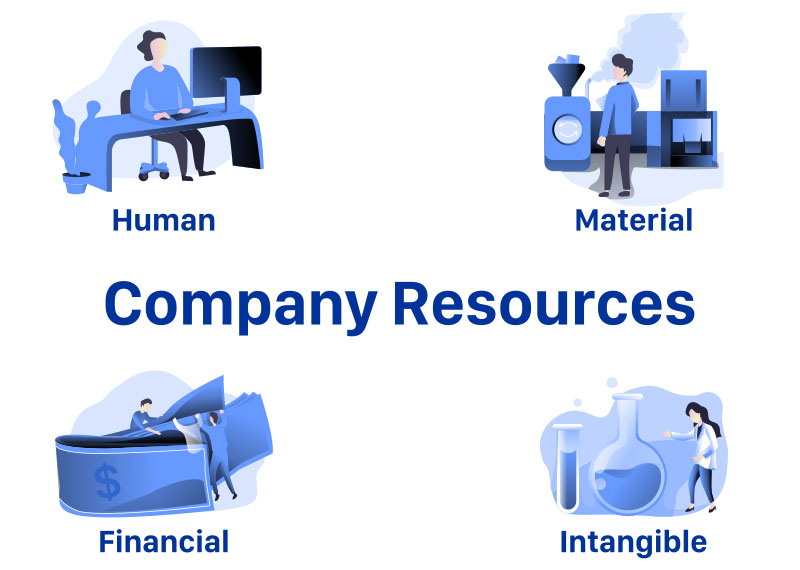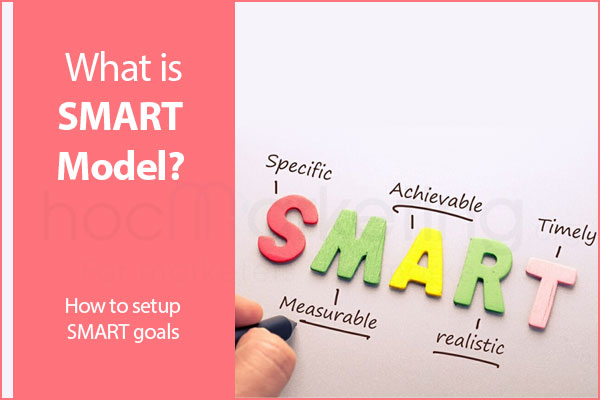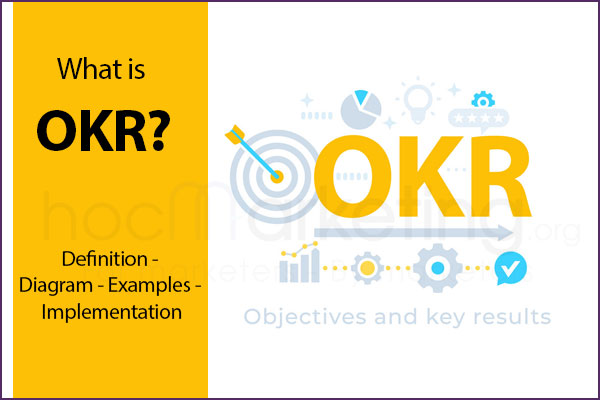
What is OKR? Characteristics of OKRs? How to implement OKRs in business?

OKR is one of the popular and useful models for setting goals, measuring business progress Marketing and business. This article will help you master the basic aspects related to the OKR model, as well as show how you can apply it effectively in the actual operation of your business.
OKR is one of the popular and useful models for setting goals, measuring business progress Marketing and business. This article will help you master the basic aspects related to the OKR model, as well as show how you can apply it effectively in the actual operation of your business.
What is OKR?
OKR - short for Objectives and Key Results - is a goal setting and performance measurement model used by businesses to lead and manage staff.
OKR is applied quite commonly in many large and small businesses, however, Google is considered one of the businesses that apply OKR with the most extensive scale and effectiveness.
OKR Model
The OKR model consists of 2 core elements: Objective and Key Results, which can be seen as the diagram below:
Objective is a large-scale, general goal that needs the contribution and coordination of many individuals and teams in the enterprise and can be achieved for a long time.
For example:
- X-App - an app development company aims to reach 20 million new users in 2021
- X-Trade - an e-commerce company aims to increase sales revenue by 15% in the first quarter of 2022 compared to the same period of the previous year.
Key Results are goals with a smaller scale, requiring less manpower to perform compared to Objectives, which act as the basis, progress to achieve Objectives. Key Results are broken down into timelines (weeks, months, quarters) to track and measure results.
In most cases, 1 Objective is usually accompanied by 2 - 5 Key Results.
For example:
- To reach 20 million new users in 2021, X-App company establishes the following Key results:
- Upgrade and optimize UI/UX
- Add 5 new features
- Implement Affiliate Marketing Program
- Promote the application on the Youtube platform (budget of 50 million VND/month) to attract 1,700 new users per month
- In order to achieve the goal of increasing sales revenue by 15% in the first quarter of 2022 compared to the same period of the previous year, X-trade company B set up Key results (the following basic goals):
- Attracting 500 new reputable retailers to join the plaform.
- Looking for 2 more delivery partners who can cooperate for a long time.
- Launch big promotions on holidays and Flash Sale days.
- Sign a contract with 1 KOL in the first month of the quarter.
- Maintain customer satisfaction rate above 80%.
Brief history of OKR
The OKR model is said to have been invented in 1975 by Andrew Grove, the co-founder of Intel - one of the world's leading microprocessor chip manufacturing businesses. At this time, OKRs are only applicable internally at Intel. In 1983, OKR was officially popularized in the book written by Andrew Grove - High Output Management.

Andrew Grove - said to be father of OKR
In 1999, the OKR was popularized at Google with the initiator being John Doerr - a venture capitalist in the company. After the initial process of proving its effectiveness, OKRs quickly became one of the mainstream management methods or even a part of Google's culture in the organization and management of departments and teams.

John Doerr - The person who popularized OKR at Google
Years later, Doerr also published a book on OKRs titled Measure What Matters (2017). The content of the book focuses on explaining and demonstrating the effectiveness of OKRs through real-life examples that he has witnessed.
Since becoming popular at Google, OKRs have been adopted by many businesses, including prominent names like LinkedIn, Twitter, Gett, Uber, and Microsoft.
Characteristics of OKRs
Throughout the history of applying OKRs in businesses, managers have said that the OKR model is associated with the following characteristics:
Characteristics of OKRs
Specificity
Instead of in-depth analysis for selecting a goal, OKRs direct managers to specific options for implementing defined goals.
Concentration
OKR model helps businesses focus resources to accomplish important, prioritized goals within a certain period of time.
Measureability
Thanks to key results associated with specific metrics, OKRs help businesses measure progress and effectiveness in achieving set goals.
Flexibility
Instead of achieving goals with a fixed annual plan, OKRs help businesses take a flexible approach. By using shorter target cycles, companies can adapt and respond to change.
Simplicity
Implementing the OKR model is simple, and the OKRs themselves are easy to understand and require only a streamlined process instead of a complicated and cumbersome system.
Transparency
Creating alignment within the organization is one of the main purposes of the OKR model. To do so, OKRs once established are transparently available to all levels of the company - everyone has access to the OKRs of others to understand their accountability goals. responsibility of themselves and their colleagues in the company.
Benefits from OKRs
Businesses that implement OKRs properly can have the following 6 benefits:
1. Improve interoperability and close links within the enterprise
OKRs help create connections between individuals, teams and departments to accomplish the common goals of the business.
2. Improve the ability to concentrate resources
Based on the relationship between Objective and Key Results, managers can allocate resources (human, financial, tools, etc.) to make employees prioritize important company goals.
3. Increase transparency in management
OKR builds a transparent culture for the company, so employees can understand the work and plans of each individual and department.
4. Promote employee initiative
Once the company's activities are well understood, the leadership can make accurate decisions, and at the same time create opportunities for employees to actively monitor the year's goals, arrange the work in a reasonable way to achieve the goals according to the plan of the business.
5. Improve ability to measure & control progress
Through the indicators, OKRs will reflect how much individuals, departments and the whole company are completing the target percentage.
6. Improve efficiency when pursuing goals
OKRs allow managers to lead to their fullest potential at work, helping the company achieve impressive results.
Differences between OKR model and SMART model
When you learn about the OKR model, you must have heard or learned about the SMART model. Both of these models are applied to goal setting in organizational activities. However, according to hocmarketing.org, there are 2 major differences between OKR and SMART as follows:
First, the SMART model focuses on choosing a goal wisely, while OKR focuses on how to achieve that goal effectively.
As shown above, OKRs use baseline goals with objectives to more strategically allocate resources and time to achieve the main goal efficiently within a given period of time. Meanwhile, SMART provides principles to guide managers in setting single goals that best suit the current situation and the strategy of the business. When we talk about SMART, we talk about strategy, measureability, feasibility, usability, and timing, while when we talk about OKRs, we talk about how to set baseline goals to accomplish them.
Second, the SMART model is often used to develop long-term strategic plans, while OKRs are often used for medium and short-term plans.
Because SMART is more about selecting goals, this model is often applied in the development of long-term strategic plans. Wisely identifying long-term strategic goals can help your business thrive in the years to come. In contrast, choosing unwise long-term goals can cause businesses to lose a lot of things such as opportunities, revenue, market share...
Meanwhile, OKRs are preferred to be used in medium and short-term plans because the main goals are usually predetermined or easily identifiable. The problem to be solved in these plans is how to achieve those goals efficiently in the given time period.
Implementing OKRs in Marketing
OKRs can help improve the efficiency and effectiveness of implementing marketing strategies and campaigns of an enterprise. Implementing OKR relatively easy in most businesses. First, the business needs to identify Objectives need to be acomplished in the time to come. Objectives are goals which have been alreay set in Marketing plans and stratagies. Second, for each objective, the business has to identify key results which are need to be met in order to reach the objective.
The dissemination and application of OKRs in enterprises should be done skillfully, with guidance and support from superiors to subordinates, as well as with consensus and suggestions from subordinates to superiors.
Common mistakes when implementing OKR
1. Use OKRs to replace task lists
Key results are more complicated and take more time and effort than regular tasks do. Therefore, this replacement can make the employee's work process slower, or even the employee does not know how to meet those key results.
2. Set too many Key results for 1 Objective
Iif you set too many Key results for an objective, it will make employees and teams feel confused, do not know which goal to focus on, or more seriously, feel pressured before the list. densely defined goals.
3. Not arranging OKRs in a logical order of priority
Sometimes businesses are so obsessed with creating OKRs that they forget to arrange them according to a reasonable priority. This can slow down the growth of the business and reduce the effectiveness of OKRs, especially for small businesses with limited resources.
4. Forget to track OKRs
For managers, setting up OKRs is not the end of the story. Tracking OKR implementation is equally important. In addition to capturing the implementation progress, monitoring also helps managers know where their departments and teams are facing difficulties, thereby taking timely support measures, making the implementation process easier. should be transparent, ensuring efficiency and progress.
Some tips for building OKRs
For Objectives
First of all, Objectives should be simple, short, and easy to remember. Objectives that are too cumbersome or obscure will make it difficult to establish Key results.
Second, the Objectives must match the strategy & culture of the business.
Third, the Objectives must be considered with the resources of the business to ensure feasibility when deploying.
For Key results
A key result must be measurable
You should only set 3-5 key results for 1 objective.
Summary
The OKR model is a simple but highly effective tool in production and business management and marketing. It allows businesses, departments, teams, and individuals to focus on measurable goals and improve individual and collective performance throughout the life of that business.

